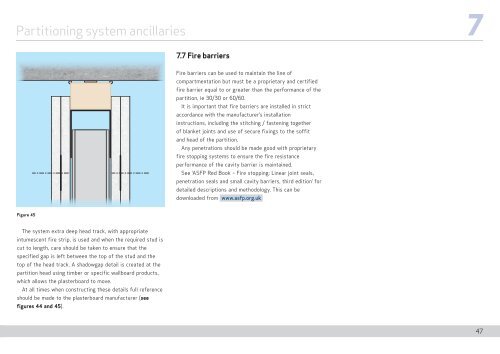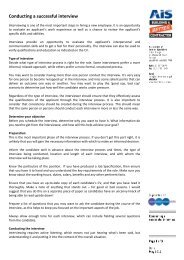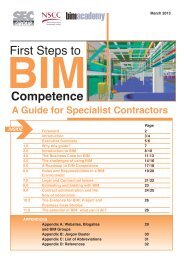6 - Association of Interior Specialists
6 - Association of Interior Specialists
6 - Association of Interior Specialists
- No tags were found...
You also want an ePaper? Increase the reach of your titles
YUMPU automatically turns print PDFs into web optimized ePapers that Google loves.
Partitioning system ancillaries 77.7 Fire barriersFire barriers can be used to maintain the line <strong>of</strong>compartmentation but must be a proprietary and certifiedfire barrier equal to or greater than the performance <strong>of</strong> thepartition, ie 30/30 or 60/60.It is important that fire barriers are installed in strictaccordance with the manufacturer’s installationinstructions, including the stitching / fastening together<strong>of</strong> blanket joints and use <strong>of</strong> secure fixings to the s<strong>of</strong>fitand head <strong>of</strong> the partition.Any penetrations should be made good with proprietaryfire stopping systems to ensure the fire resistanceperformance <strong>of</strong> the cavity barrier is maintained.See ‘ASFP Red Book – Fire stopping: Linear joint seals,penetration seals and small cavity barriers, third edition’ fordetailed descriptions and methodology. This can bedownloaded from www.asfp.org.ukFigure 45The system extra deep head track, with appropriateintumescent fire strip, is used and when the required stud iscut to length, care should be taken to ensure that thespecified gap is left between the top <strong>of</strong> the stud and thetop <strong>of</strong> the head track. A shadowgap detail is created at thepartition head using timber or specific wallboard products,which allows the plasterboard to move.At all times when constructing these details full referenceshould be made to the plasterboard manufacturer (seefigures 44 and 45).47










